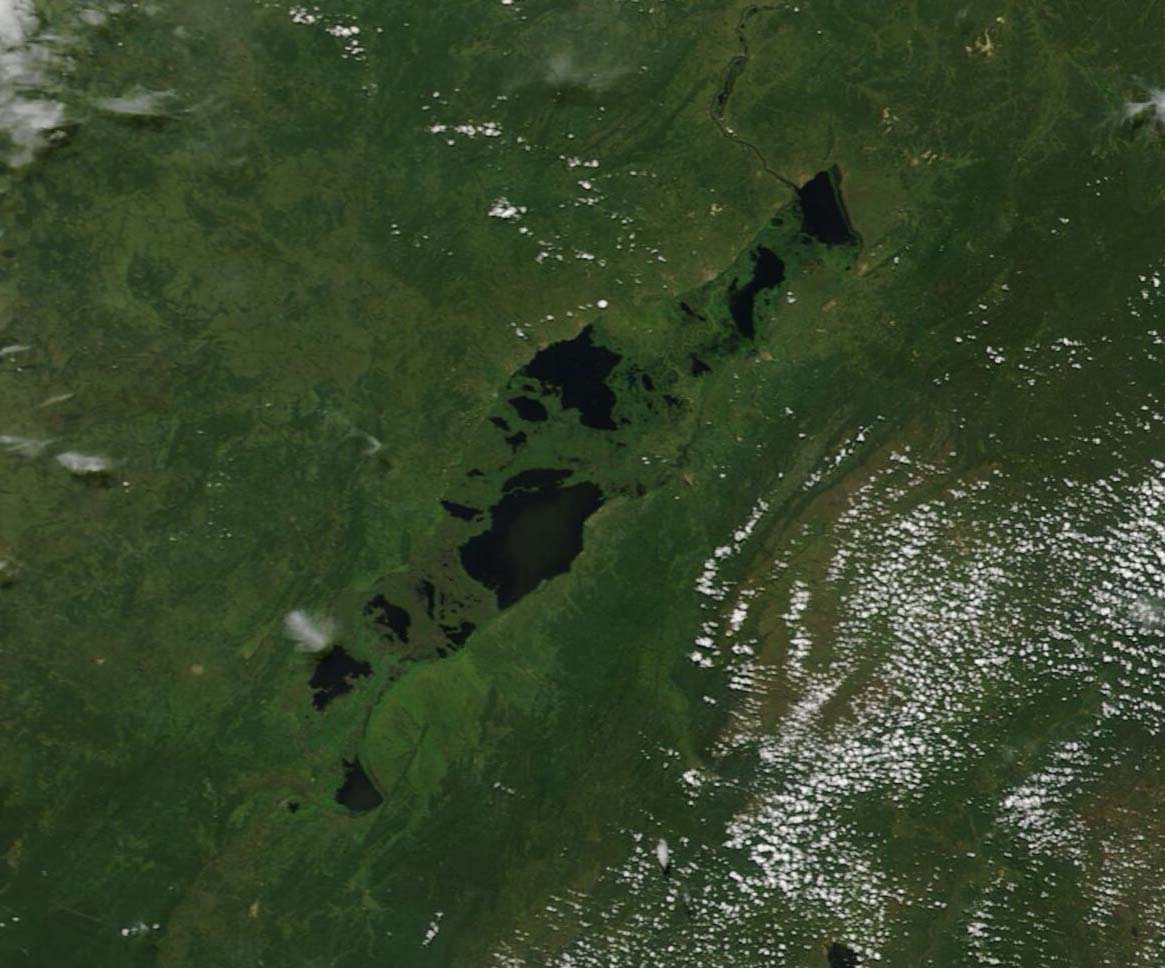Images
April 14, 2022 - Upemba Depression
Tweet
Deep in the heart of Central Africa, an ancient depression and a long river combine to create a vast marshy area. It is here, in the Upemba Depression of the Katanga Province of the Democratic Republic of Congo, where the Lualaba River widens to create a myriad of marshy lakes. Of the roughly fifty lakes found in the Depression, Lake Upemba is the largest, with a surface area roughly 200 square miles (500 square kilometers). Lake Upemba, like many of the adjacent lakes, is filled with floating islands papyrus and other dense wetland vegetation.
This region has been home to humans since at least 700 A.D., according to archaeological records. In modern times, it has been enormously biodiverse, with more than 1,800 difference species, including lion, leopard, elephant, buffalo and the Katanga impala. The Upemba National Park was one of the first parks established in the Democratic Republic of Congo. Established in 1939, the park spans an area of 1.7 million hectares. It has been recognized as an Important Bird and Biodiversity Area (IBA) by Birdlife International. Unfortunately, pressure from poachers, fishing, and other human needs has reduced number of animals as well as biodiversity within the region over the last several decades.
On April 11, 2022, the Moderate Resolution Imaging Spectroradiometer (MODIS) on board NASA’s Terra satellite acquired a true-color image of the many lakes in the Upemba Depression.
Image Facts
Satellite:
Terra
Date Acquired: 4/11/2022
Resolutions:
1km (39.8 KB), 500m (86.7 KB), 250m (194.1 KB)
Bands Used: 1,4,3
Image Credit:
MODIS Land Rapid Response Team, NASA GSFC
Tweet
Deep in the heart of Central Africa, an ancient depression and a long river combine to create a vast marshy area. It is here, in the Upemba Depression of the Katanga Province of the Democratic Republic of Congo, where the Lualaba River widens to create a myriad of marshy lakes. Of the roughly fifty lakes found in the Depression, Lake Upemba is the largest, with a surface area roughly 200 square miles (500 square kilometers). Lake Upemba, like many of the adjacent lakes, is filled with floating islands papyrus and other dense wetland vegetation.
This region has been home to humans since at least 700 A.D., according to archaeological records. In modern times, it has been enormously biodiverse, with more than 1,800 difference species, including lion, leopard, elephant, buffalo and the Katanga impala. The Upemba National Park was one of the first parks established in the Democratic Republic of Congo. Established in 1939, the park spans an area of 1.7 million hectares. It has been recognized as an Important Bird and Biodiversity Area (IBA) by Birdlife International. Unfortunately, pressure from poachers, fishing, and other human needs has reduced number of animals as well as biodiversity within the region over the last several decades.
On April 11, 2022, the Moderate Resolution Imaging Spectroradiometer (MODIS) on board NASA’s Terra satellite acquired a true-color image of the many lakes in the Upemba Depression.
Image Facts
Satellite:
Terra
Date Acquired: 4/11/2022
Resolutions:
1km (39.8 KB), 500m (86.7 KB), 250m (194.1 KB)
Bands Used: 1,4,3
Image Credit:
MODIS Land Rapid Response Team, NASA GSFC




